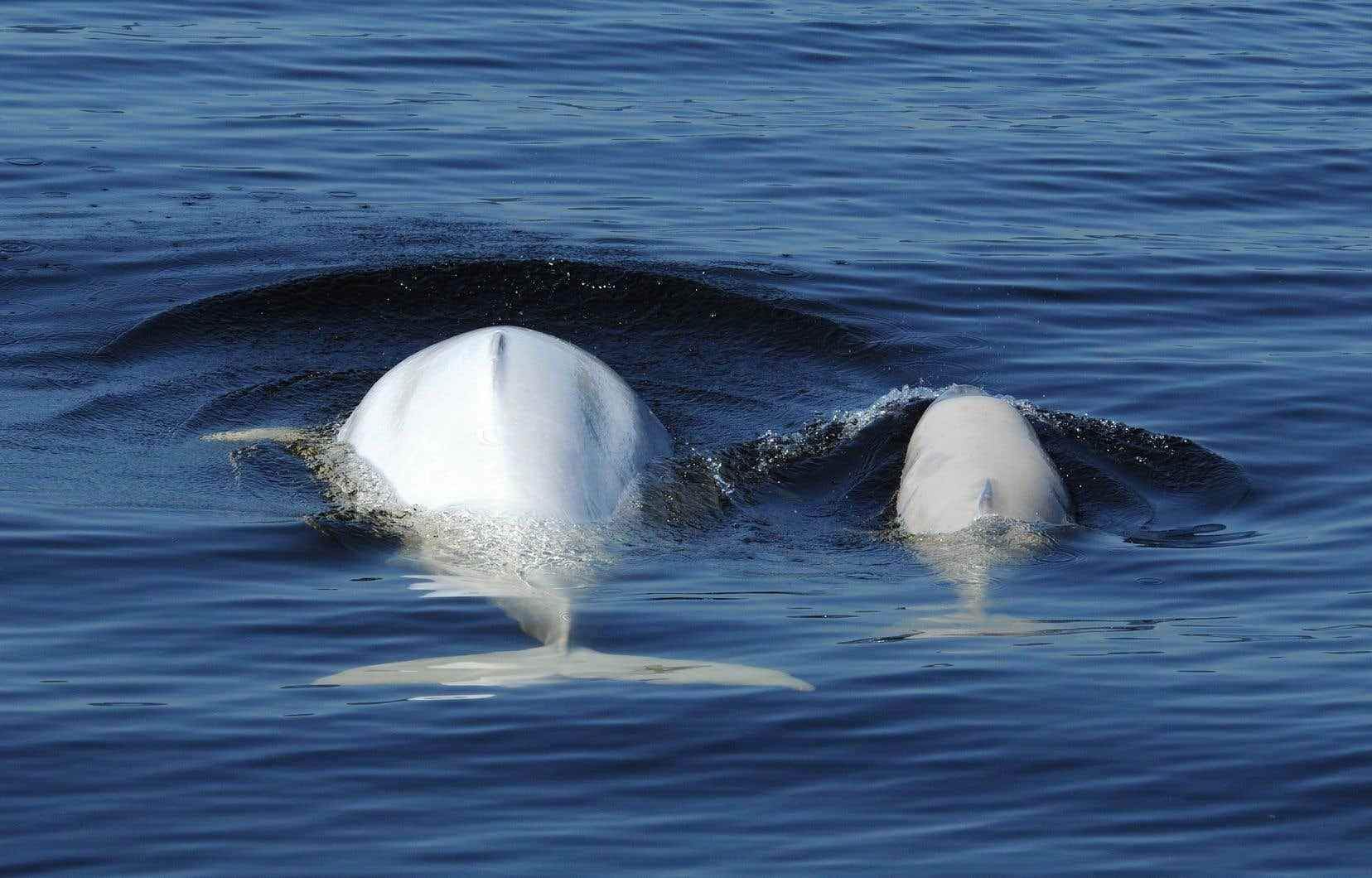Almost 25 years after the creation of the park sailor from Saguenay–St. Lawrencethe governments of Canada and Quebec could finally go ahead with an expansion project, learned The duty. As Montreal prepares to host the UN conference on biodiversity (COP15), such a measure would make it possible to substantially increase the protection of the ecosystems of the estuary and of the species most emblematic of its fragility, the beluga.
According to information obtained from sources well acquainted with the ongoing discussions between Quebec and Ottawa, the two levels of government would be in favor of the expansion of this protected area set up in 1998 and endowed with a management structure involving the federal and the provincial. The idea of confirming the intention to expand the marine park during COP15, which begins on December 7, would have clearly been mentioned.
The Trudeau government would not officially comment on the ongoing negotiations. “Given their respective will and commitment to the protection of the St. Lawrence Estuary, the governments of Canada and Quebec are currently evaluating the options available, including the possibility of expanding the boundaries of the Saguenay Marine Park– Saint-Laurent”, however explained to the To have to the office of the Minister of Environment and Climate Change and Minister responsible for Parks Canada, Steven Guilbeault.
Same story at the office of the Minister of the Environment, the Fight Against Climate Change, Wildlife and Parks, Benoit Charette. “Discussions are underway between the two governments on several projects, including that of the Saguenay–St. Lawrence Marine Park,” we replied in writing.
This project could also be an important milestone in achieving the Legault government’s goal of protecting 30% of Quebec’s marine environments by the end of the decade. “The expansion of the Saguenay-St. Lawrence Marine Park is one of the options currently being considered in the various scenarios currently being assessed so that Quebec can achieve its objectives by 2030,” argued the firm. by Mr Charette.
For the beluga
The idea of expanding the only marine park in the province has been on the table since its creation, confirms Parks Canada. “These considerations have been heightened in recent years due to the identification of critical beluga whale habitat, more than 60% of which is outside park boundaries. Under the Species at Risk Act, the federal government has an obligation to protect it.
This habitat covers 2800 km2 of the St. Lawrence estuary, while the marine park covers an area of only 1,245 km2. An expansion project that would be consistent with the desire to better protect the living environment of the only resident cetacean of the St. Lawrence could therefore, in theory, lead to “doubling or even tripling the current area” of the park, according to the chairman of the committee. marine park coordinator, Émilien Pelletier. This would mean that the limits of the protected area could extend to around L’Isle-aux-Coudres, upstream, and downstream of Trois-Pistoles, including the Cacouna sector, considered a nursery for the beluga.
Without going into details, Parks Canada specifies that “the governments of Canada and Quebec are currently evaluating the options available, including the possibility of expanding the boundaries of the Saguenay–St. Lawrence Marine Park”.
Émilien Pelletier adds that the analysis of the project is a commitment of the park’s 2009 master plan, which is still in effect. “We have approached both levels of government to ask them to seriously consider the expansion. We received a positive response from the ministries concerned, even if there was no firm commitment on their part. There is an interest that seems to me strong in Parks Canada and in Quebec. »
According to him, the management structure involving the federal and provincial levels has proven to be “a great success” since 1998. In particular, it has enabled the establishment of regulations to oversee navigation in the park, but also to limit disturbances to this ecosystem includes more than 2200 species. The sector has also become an important place for scientific research, particularly on different species of cetaceans. Not to mention the significant contribution to the region’s tourist economy, which relies on whale watching cruises, says Mr. Pelletier.
COP15
Moreover, he recalls that expansion would be simpler than the creation of a new structure, since the Act respecting the Saguenay-St. Lawrence Marine Park makes it possible to modify “the limits” with the agreement of Quebec and Ottawa. An element also underlined by a source well aware of the discussions in progress.
President and Scientific Director of the Group for Research and Education on Marine Mammals, Robert Michaud believes that the expansion of the park “is a logical solution and probably the best solution given the urgency of better protecting belugas and their essential habitat. “.
According to this pioneer in research on the species, there is clearly a need to act quickly: this “endangered” population continues to decline, with now fewer than 880 individuals, and the mortality of young and females is now “very important” today. The disturbance beluga whales experience outside the boundaries of the marine park could be a factor in this decline, according to scientists.
The “Collective COP15”, which includes 67 civil society groups and which organizes several events during the UN conference in Montreal, is calling for the expansion of the marine park. “With an unequaled level of cynicism in the population on the ability of governments to act for the protection of the environment, Ottawa and Quebec must put aside the biodiversity issues currently in dispute and work together to sow hope. How can we ask the world to collaborate at the end of COP15 if we cannot do it across the country”, drops Alain Branchaud, general manager of the Society for Nature and Parks of Quebec.
